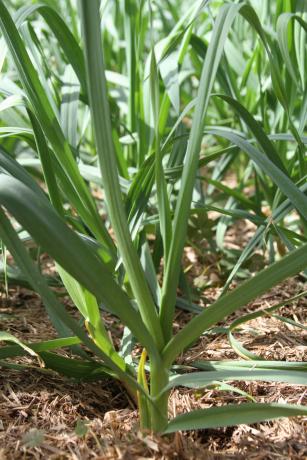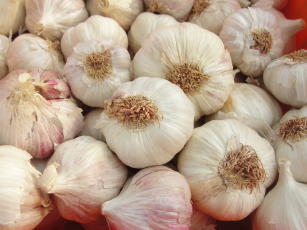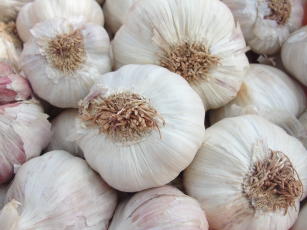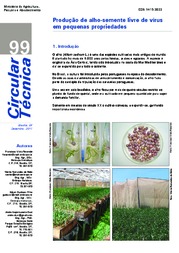Produção de alho-semente livre de vírus
Virus-Free Garlic Seed Production

Photo: RODRIGUES, Paula
Viruses are diseases that bring a lot of economic damage to garlic production, causing losses of 30 to 50% in productivity, especially because this crop relies on vegetative reproduction through garlic bulbils (cloves). If virus-infected bulbils are used to start a plantation, the crop is damaged and there is a reduction in yield and a drop in garlic quality.
The virus-free garlic seed is a technology based on a clonal cleaning process, that is, a laboratory-based technique that provides for in vitro multiplication and a series of tests to completely eliminate viruses and other harmful microorganisms from the plant.
To ensure quality, plants multiplied through the laboratory cleaning process are grown on a special insect-proof screen aimed at mites and aphids that transmit viruses and other diseases. This process ensures that the garlic plants will be healthy and that the garlic bulbils used as seeds will have positive results.
The virus-free garlic seed production system in anti-aphid screens significantly reduces the level of plant infection, since the planted virus-free garlic seed is fully protected from vector attacks, ensuring the physiological quality and productivity of the crop for the next planting. Hence the adoption of the system promotes the improvement of the phytosanitary quality of garlic seeds, and ensures the uniformity of seed germination and increase in plant vigor.
The benefits of adopting this farming practice translate into yield increases of up to 50% and may reach 80% for premium garlic in comparison with virus-susceptible garlic. There is also an increase in the production's commercial value according to the quality and the larger size of the garlic bulbs, which will have better commercial acceptance and better remuneration on the market.
The technology also positively impacts the environment through the development of healthier, higher quality plants that may be even less susceptible to other diseases. There's a reduction in the use of agrochemicals and especially in the frequency of spraying and in the variety of products used.
This farming practice recommended by Embrapa Vegetables has been especially adopted for small and medium-sized rural properties in the Brazilian states of Bahia, Minas Gerais, São Paulo, Distrito Federal and Goiás.
Where to find:
Para ter acesso ao processo de Produção de alho-semente livre de vírus consulte a publicação Produção de alho-semente livre de vírus em pequenas propriedades disponível no link: https://ainfo.cnptia.embrapa.br/digital/bitstream/item/57208/1/CT-99.pdf
Agricultural practice: For seed management, conservation and germination Launch year: 2002
Country: Brazil Region: Central-West, Southeast, Northeast State: Distrito Federal, Goiás, Espírito Santo, Minas Gerais, Rio de Janeiro, São Paulo, Paraná, Rio Grande do Sul, Santa Catarina, Bahia Biome: Cerrado, Atlantic Rainforest, Caatinga
Responsible Unit: Embrapa Vegetables
Participating Units: Embrapa Vegetables




